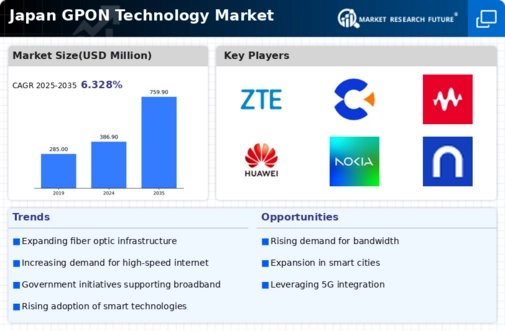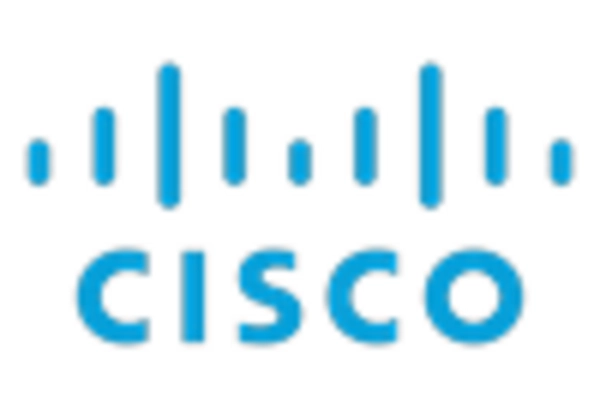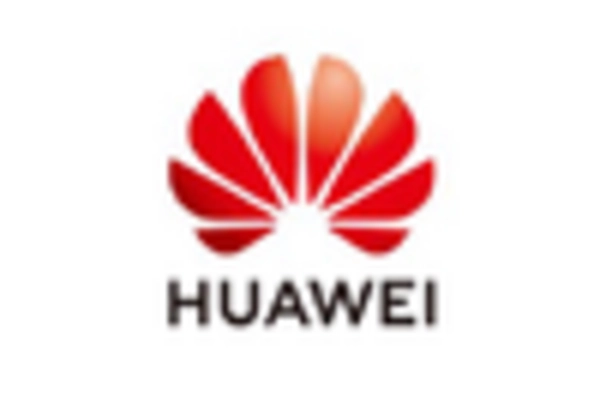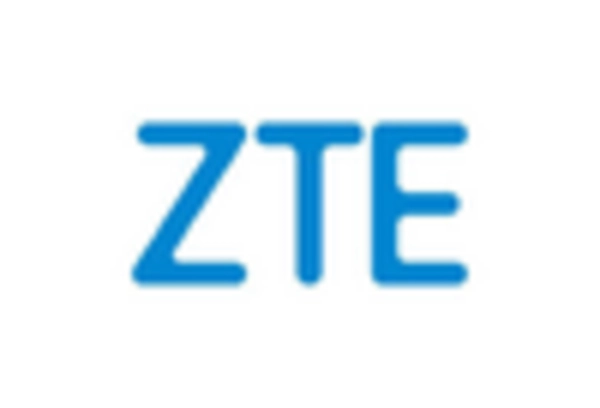Rising Competition Among Service Providers
The competitive landscape among internet service providers in Japan is intensifying, which is driving innovation and investment in the gpon technology market. As companies strive to differentiate themselves, many are expanding their fiber-optic networks to offer superior services. This competition has led to a decrease in prices, making high-speed internet more accessible to a broader audience. Recent statistics indicate that the number of households subscribing to fiber-optic services has increased by 20% over the past year, reflecting the growing consumer preference for faster internet. The gpon technology market is thus benefiting from this competitive environment, as providers invest in infrastructure upgrades to attract and retain customers. This trend is likely to continue, further stimulating growth in the market.
Technological Advancements in Fiber Optics
Technological innovations in fiber optics are significantly influencing the gpon technology market in Japan. The development of new materials and techniques has led to improved performance and reduced costs in fiber-optic installations. For instance, advancements in passive optical networks (PON) technology have enabled higher data transmission rates and increased network efficiency. This is particularly relevant in Japan, where the demand for high-speed internet continues to rise. The gpon technology market is likely to see a boost as service providers adopt these new technologies to enhance their offerings. Furthermore, the integration of artificial intelligence and machine learning in network management is expected to optimize performance and reduce operational costs, making gpon solutions more attractive to both providers and consumers alike.
Increasing Urbanization and Connectivity Needs
The rapid urbanization in Japan is driving the demand for enhanced connectivity solutions, particularly in metropolitan areas. As cities expand, the need for high-speed internet access becomes paramount. The gpon technology market is poised to benefit from this trend, as urban residents increasingly seek reliable and fast internet services. According to recent data, urban areas in Japan have seen a surge in internet subscriptions, with a notable increase of approximately 15% in the last year alone. This urban growth necessitates the deployment of advanced fiber-optic networks, which gpon technology provides, ensuring that urban populations remain connected and can access digital services seamlessly. The gpon technology market is thus positioned to capitalize on this urbanization trend, as service providers look to upgrade their infrastructure to meet the growing demands of city dwellers.
Consumer Demand for Enhanced Digital Experiences
As digital consumption patterns evolve, there is a growing consumer demand for enhanced digital experiences in Japan. The proliferation of streaming services, online gaming, and smart home technologies is driving the need for faster and more reliable internet connections. The gpon technology market is well-positioned to meet these demands, as it offers the necessary bandwidth and low latency required for high-quality digital experiences. Recent surveys indicate that over 70% of consumers prioritize internet speed and reliability when choosing a service provider. This trend is prompting service providers to invest in gpon technology to ensure they can deliver the performance that consumers expect. The gpon technology market is thus likely to see sustained growth as providers adapt to the changing preferences of their customer base.
Government Policies Promoting Digital Infrastructure
The Japanese government is actively promoting the development of digital infrastructure, which is positively impacting the gpon technology market. Initiatives aimed at enhancing broadband access in rural and underserved areas are encouraging investments in fiber-optic networks. The government has set ambitious targets to ensure that 100% of households have access to high-speed internet by 2025, which is likely to drive demand for gpon technology solutions. Additionally, funding programs and incentives for service providers to expand their networks are becoming more prevalent. This supportive regulatory environment is fostering growth in the gpon technology market, as companies are more willing to invest in infrastructure projects that align with government objectives. The collaboration between public and private sectors is expected to yield significant advancements in connectivity across Japan.

















Leave a Comment